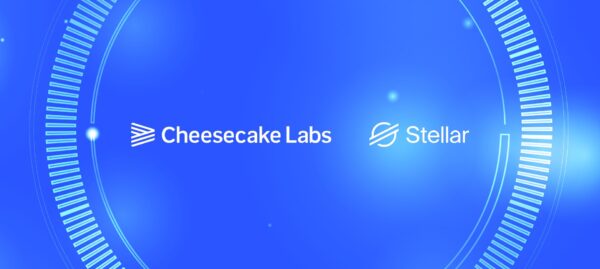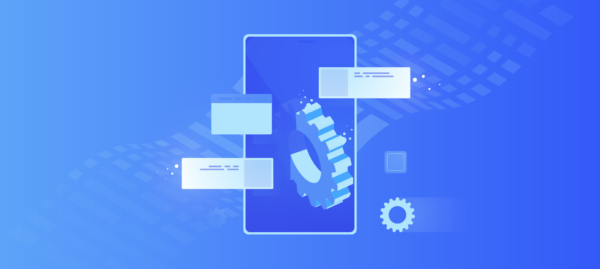What Are Stablecoins, and Why Should You Know About Them?
Gabriel Soares | Nov 26, 2025

If your business needs to maintain accurate and audit-ready records, you’ll want a system that can prove what happened — and when. Blockchain technology could be the answer.
But what is blockchain? And how does blockchain work?
Blockchain organizes and protects your data with built-in transparency and tamper resistance. This shared ledger technology keeps a permanent, traceable history of every transaction across all participants, making it nearly impossible to alter records or manipulate outcomes.
Sound interesting? Today, we’re giving you a crash course in all things blockchain, including what it is, how it works, how other companies have used it, and why it might be the right choice for your business.
Think of blockchain as a ledger that writes in permanent ink and instantly shares updates with everyone involved.
When someone adds a new transaction to the blockchain, it’s grouped together with others into a block. While some of the data inside the block might be encrypted for privacy, the block itself isn’t encrypted. What really makes the blockchain secure and tamper-proof is that each block has its own unique fingerprint, called a hash.
This hash is like a digital signature, and it also includes the hash of the block before it. That way, each block is securely linked to the one before it, creating a chain — a blockchain. If anyone tries to change a block, its hash would change, breaking the link and making the tampering obvious. This is what gives blockchain its powerful immutability.
In a blockchain, nothing gets added until the network reaches consensus — until a majority of participants (called nodes) agree that the data is valid.
Every change is also automatically tracked and timestamped. Once recorded, data can’t be altered without triggering a visible update across the entire network. So, no one can quietly edit past records without everyone else knowing.
A food company wants to trace ingredient origin to prove ethical sourcing. It can ask supply chain partners at each stage to record key details on the blockchain, like where the shipment was harvested, which batch it belongs to, and when it was delivered.
Each handoff is logged and verified as the product moves, so by the time it reaches store shelves, both the company and its customers can trace every step.
No party can change dates without it being flagged across the network. This means validators detect and can reject any attempt to alter records, keeping the blockchain tamper-proof.
There are three main blockchain network options: public, private, and permissioned. It’s important to understand their differences before you build on blockchain.
Here’s how they compare:
| Feature | Public | Private | Permissioned |
|---|---|---|---|
| Access | Open to anyone | Limited to approved participants | Restricted access with defined roles |
| Governance | Decentralized | Centralized (single organization or group) | Hybrid (company or consortium oversight) |
| Transparency | Fully transparent | Private by default | Controlled, shared only with relevant parties |
| Data privacy | Minimal — everything is public | Strong privacy controls | Strong privacy with role-based access |
| Speed and scalability | Variable speed, affected by consensus mechanism & network congestion | Fast and scalable | Fast and scalable |
| Security model | Distributed consensus | Managed internally | Based on identity and role-based permissions |
| Energy use | High (especially with Proof of Work) | Low | Low |
| Integration | Requires careful integration with internal systems | Designed for enterprise integration | Designed for business collaboration |
| Compliance and auditing | Challenging due to public visibility | Easier with internal controls | Supports compliance and audit-friendly access |
| Trust model | Trustless relies on cryptographic proof & consensus | Trust in central authority | Trust among verified participants |
| Ideal use cases | Open innovation, DeFi, NFTs, public utilities | Internal data sharing, supply chain, and finance | B2B collaboration, regulated industries |
Let’s dive deeper into each type and the pros and cons of blockchain:
A public blockchain is open to everybody — anyone from anywhere can join, view transactions, and participate. No central authority is required.
Ethereum is among the most well-known public blockchains today. It powers thousands of dApps and smart contracts, from DeFi platforms like Uniswap to NFT marketplaces like OpenSea.
| Pros of public blockchains | Cons of public blockchains |
|---|---|
| Public, verifiable audit trail; No reliance on central authority or intermediaries; Resistant to censorship and tampering; Strong security through distributed validation; Open to global innovation and development (such as DeFi, NFTs). | Potentially slower and more costly at scale; High energy consumption (especially with PoW); Public visibility may pose privacy challenges; Regulatory uncertainty in many regions; Theoretical risk of 51% attacks (unlikely in mature networks); Protocol-level upgrades require community consensus. |
This type of blockchain runs on a closed network governed by a single authority, which controls who can access and validate data, unlike permissioned blockchains, where governance is shared among multiple participants.
JPMorgan Chase uses Quorum to process cross-border payments and settle transactions between partner banks in real time. This private blockchain shrinks settlement times from days to minutes while keeping transactions confidential.
| Pros of private blockchains | Cons of private blockchain |
|---|---|
| Full control over network rules and access; Strong privacy and data protection; High speed and scalability for internal use. Lower operating costs; Supports regulatory compliance and audit needs; Secure, trusted environment for internal teams; Smaller environmental footprint; | Limited transparency — no external third-party verification; Limited access to public developer ecosystems; Complex to integrate with public chains; Potentially higher setup and maintenance costs; Governance disputes may arise internally; |
Participants in permissioned blockchains are pre-approved and assigned specific roles to restrict who can access or write data.
This type of network shares private blockchain’s advantages but is better suited for structured collaboration between known entities, where governance and access control are shared among multiple participants (such as joint venture participants or supply chain partners).
Visa’s B2B Connect platform uses the permissioned blockchain Hyperledger Fabric to remove intermediaries and reduce settlement times for bank-to-bank transactions.
| Pros of permissioned blockchains | Cons of permissioned blockchains |
|---|---|
| High security through strict identity and access controls; Fast, scalable, and enterprise-friendly; Strong data privacy; Easier to align with regulatory requirements; More efficient than high-energy public chains; Customizable for industry-specific needs; Trusted environment among known participants; | Governance is shared, but it is still more centralized than public networks; Shared governance creates potential for mismanagement; Limited ecosystem for external development or innovation; Requires trust in internal governanceComplex cross-chain integration; May involve a significant initial investment; |
If you’re exploring how blockchain could fit into your organization, start with these key terms — they’ll help you make sense of the technology and its potential.
Here are the advantages of blockchain and how they play out in practical scenarios:
Blockchain distributes encryptographically secured data across a network to remove single points of failure and make tampering extremely difficult. Access can also be permissioned and anonymized.
Hospitals can use it to secure patient records and control access across providers, insurers, and labs. In the pharmaceutical industry, blockchain can track every batch from production to distribution to stop counterfeits and support instant recalls when safety issues arise.
All participants view the same verified data through a shared source of truth. This minimizes mismatches and disputes.
Public agencies can use blockchain to digitize regulated documents and official records, including contracts, benefits, licenses, and permits. This helps curb fraud and speed up verifications.
Smart contracts trigger actions when conditions are met — no manual reviews, delays, or third-party intermediaries.
Insurers use smart contracts to automate claims and underwriting. This near-real-time data validation speeds up service and prevents fraud.
Blockchain replaces paper-based workflows with instantly synchronized digital records, and all parties work from a shared source of truth. No duplication, no back-and-forth.
Banks can streamline cross-border payments and trade finance with blockchain. Many payment networks now use it to settle transactions in minutes and deliver faster, more transparent service to global clients.
Every asset on a blockchain comes with an auditable trail showing where it’s been, who touched it, and when. The ledger stores data in a permanent, time-stamped sequence — each entry is locked in order, making it easy to prove when something happened and who was involved.
An animation studio can log every version of a film script or storyboard on the blockchain to create a time-stamped record that proves authorship and simplifies IP disputes.
Blockchain might be worth exploring if you answer yes to any of these, but it’s important to assess whether the technology truly fits your business needs and goals:
Do you need to eliminate intermediaries or third parties? Blockchain lets participants transact directly with one another to process payments, sign contracts, or exchange assets, potentially reducing reliance on brokers or clearinghouses where appropriate.
Is transparency and traceability critical? Blockchain gives you a near-real-time, tamper-proof record of activity. You can track every transaction, verify ownership of assets, and generate audit trails on demand for regulatory reporting.
Are you handling sensitive data that needs strong security? Blockchain protects your data through cryptographic integrity and decentralized validation. No single party can tamper with records, and any attempt to do so is immediately visible across the network. For highly sensitive data, encryption and off-chain storage can be combined with on-chain proofs.
Do you require immutable record-keeping? Once a transaction is recorded on the blockchain, it becomes permanent. You can preserve long-term records, like legal agreements and audit logs, without risk of backdating or deletion.
Are multiple parties involved and need to share data securely? Every authorized participant sees the same version of the data in the shared ledger without needing to rely on a central intermediary. You can define roles and make sure that everyone is working with the same up-to-date information.
The uses of blockchain go far beyond crypto. This technology supports companies of all sizes, from startups building token tools to global firms needing enterprise blockchain solutions.
Here are some great examples of what businesses of all sizes have accomplished with blockchain technology:
| Company and size | Blockchain project | Business impact |
|---|---|---|
| Hyperspace (Web3 startup) | NFT marketplace performance upgrade | Cheesecake Labs redesigned Hyperspace’s front end, optimized IPFS (decentralized asset storage) data loading, and added Apollo Cache and Ably for faster browsing and real-time updates. All these improved UX and sped up NFT trading decisions. |
| Mercado Bitcoin (Mid-to-large exchange) | Token Factory on Stellar | Mercado Bitcoin partnered with Cheesecake Labs to build a token issuance tool on Stellar. The Stellar Asset Sandbox tool supports MBRL (a Real-backed stablecoin) with wallet creation (via the Freighter browser wallet), asset management, and backend integration using Python/Django and Stellar APIs. |
| Stellar Development Foundation (Mid-sized nonprofit) | Stellar Aid Assist and SDP scaling | SDF enlisted Cheesecake Labs to expand Vibrant wallet integration and scale the Stellar Disbursement Platform for humanitarian aid. The platform — which has won awards for innovation and impact — delivered digital funds in Ukraine and now supports multiple organizations. |
| MoneyGram (Enterprise payments company) | MoneyGram Wallet | Cheesecake Labs developed a Stellar-based non-custodial wallet with USDC support. It featured SEP30 recovery, a scalable backend, and a rollout strategy that helped MoneyGram expand global digital access while keeping the UX beginner-friendly. |
| Hitachi (Enterprise manufacturing) | Blockchain-based procurement system | Hitachi used Hyperledger Fabric (a permissioned blockchain framework) to digitize contract workflows for 3,500+ vendors. The system reduced fraud risk, cut paperwork, and improved accuracy in monthly procurement agreements. |
| Renault (Enterprise automotive) | Regulatory compliance blockchain | Renault and IBM created a platform to manage 6,000+ compliance requirements per vehicle. It improved traceability and ESG reporting while slashing compliance costs by 50%. |
| Ford (Enterprise automotive) | Cobalt traceability in EV batteries | Ford used blockchain with IBM and RCS Global to trace cobalt from certified mines to battery production. The system verified ethical sourcing with IoT data and reduced ESG risk. |
Blockchain application development isn’t wildly different from any other digital product when it comes to costs — it all depends on what you’re building.
App development (whether blockchain-based or not) generally ranges from $5,000 to $500,000. You could throw something together yourself with minimal investment, or go all-in with a seven-figure platform if it’s mission-critical for your business. Most projects fall somewhere in the middle.
If you’re building a custom MVP with blockchain integration, expect to spend between $100,000 and $300,000 when you hire blockchain developers. This estimate accounts for UX/UI design, smart contract development, blockchain infrastructure, backend services, and front-end development.
Complexity is the biggest cost driver. The more sophisticated your app’s integrations and security requirements, the more hours your blockchain app development company needs, and the higher the cost.
Here’s a general snapshot of blockchain implementation costs and timelines:
| App type | Average cost | Timeline |
|---|---|---|
| Simple app | $75,000 – $150,000 | ~3 months |
| Average complexity app | $150,000 – $250,000 | 3 – 6 months |
| Complex app | $300,000+ | 6 – 9+ months |

Whether you’re launching a new blockchain product or applying blockchain to internal processes, our blockchain development services meet you where you are and get you to market faster.


You can think of blockchain as a shared digital notebook that anyone can read and verify. Every note is its own record or “block”. No one can erase or change previous notes; they can only add new, validated ones.
They’re the tools and systems used to build, run, and interact with blockchain networks — blockchain protocols themselves (like Ethereum, Hyperledger, or Stellar), smart contracts, consensus mechanisms (such as Proof of Stake), digital wallets, and APIs that connect blockchain to other platforms.
Blockchain is the underlying infrastructure that records every cryptocurrency transaction in a secure and permanent way, enabling peer-to-peer transfers of value. So, coins like Bitcoin or USDC can move directly between people or businesses without going through a bank. Each verified transaction is locked into a block, which helps prevent fraud and double-spending.
No. While it powers cryptocurrencies like Bitcoin, blockchain is also used for supply chains, digital identity, finance, and more.
Not at all. Most projects build on existing blockchains like Ethereum or Stellar using APIs and smart contracts.
Smart contracts are programs that automatically run actions (like payments) when specific conditions are met.
Public blockchains are transparent and decentralized. Private blockchains offer more control and privacy for businesses. They are better suited for compliance workflows or enterprise use cases where access needs to be restricted.
Blockchain is expanding beyond crypto. It’s now used to improve data integrity and automate processes in healthcare and supply chains, as well as to build trust across multi-party systems in finance and public services.

Amanda Gonsalves is a Software Engineer at Cheesecake Labs with over 5 years of experience in backend and blockchain development. She specializes in building scalable apps and secure payment solutions for global clients. Committed to continuous growth, she brings a strong focus on innovation, reliability, and clean architecture.


